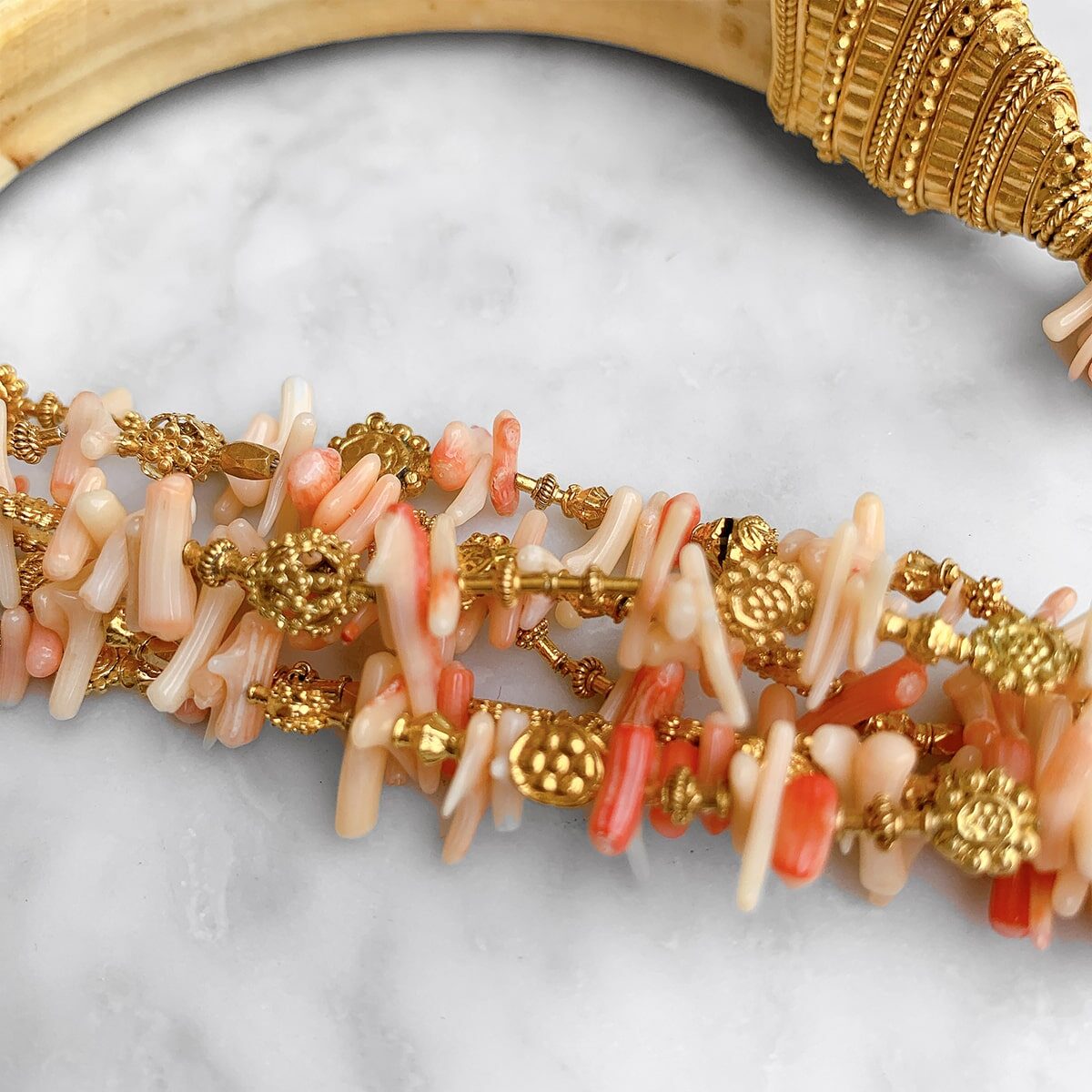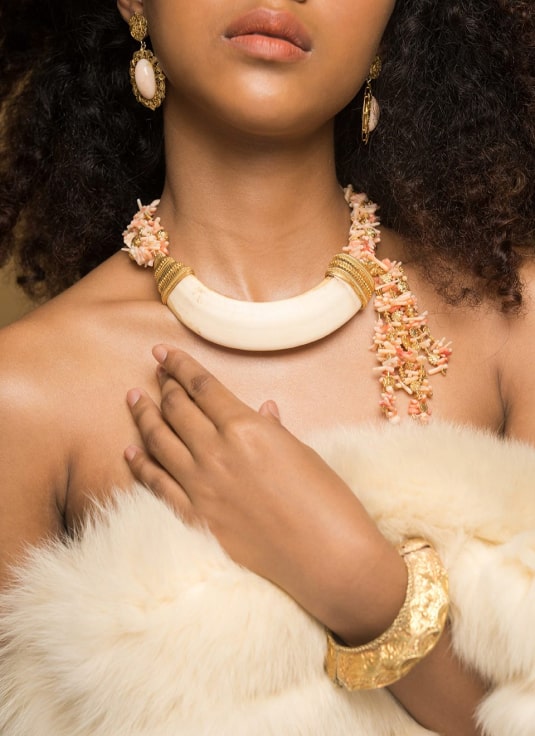From boar tusks to fossils and bone, uncover the raw beauty of nature's earthly cornucopia.
Footnotes
Art and Adornment: Boar Tusk Armlet
Boar tusks have long played an integral role in Philippine indigenous jewelry, especially in celebrating rituals or marking one’s rank. Armlets made from boar tusks bound by rattan palms—often including a figure of a rice or fertility god—are commonly worn by Ifugao and Bontoc men during ceremonies to convey their wealth and status. Headhunters are also known to wear these armbands.
Source: Luzon Collection
Ifugao Wood, Rattan & Pig Tusk Armband (Baningal or Abkil)
Armbands made from the tusks of a wild boar or pig are typical of the indigenous Bontoc and Ifugao people in Northern Luzon. Signifying conquest, they were often worn by warriors and headhunters. The armbands usually have a carved wooden man as well. It is thought that these figures were once the handles of spoons. Used for rituals, these spoons were valued as heirlooms and thought to contain talismanic powers. It comes as no surprise then that during raids on rival villages, warriors would cut off the spoon handles as war bounty, displaying them on their tusk armbands.
Source: Michael Backman Ltd













